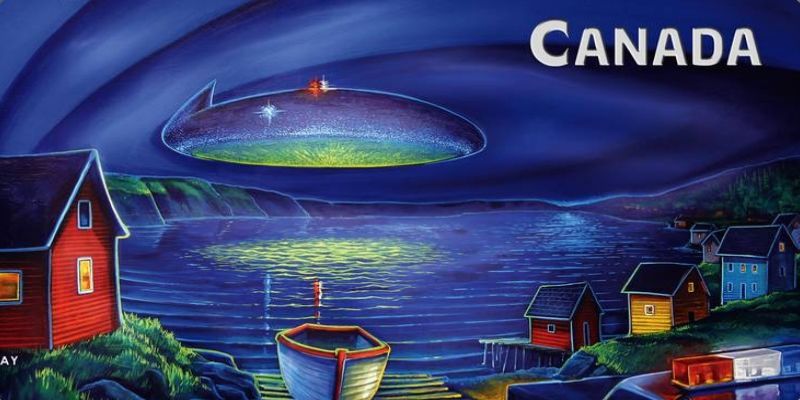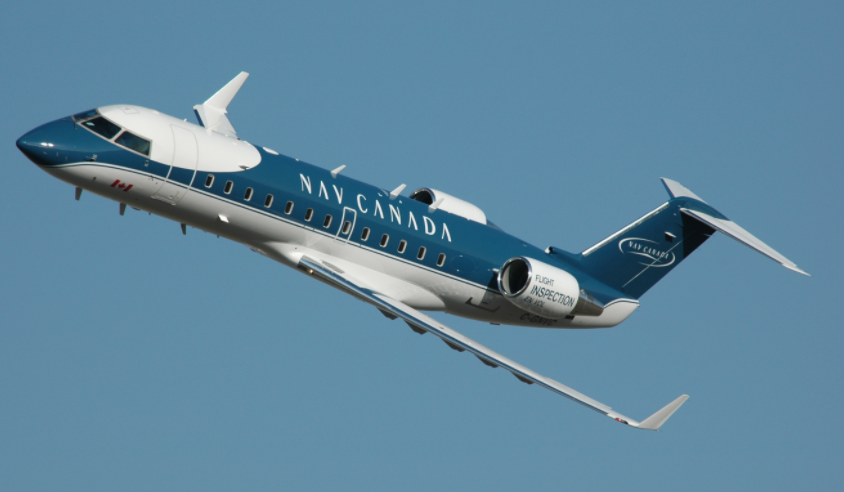Canadian Airline Pilots Keep Reporting UFOs
Article by Daniel Oits April 21, 2021 (vice.com)
• Combing through thousands of reports in a searchable digital archive operated by the Canadian government known as the Civil Aviation Daily Occurrence Report System (CADORS), VICE World News has uncovered dozens of recent UFO sightings from Canadian and international airlines. With over three decades of data, CADORS contains nearly 300,000 aviation incident reports on everything from mechanical failures to rowdy passengers to bird strikes. It also provides a fascinating record of UFO sightings by professional aviators in Canadian airspace.
• “Pilots are probably not reporting about 90 per cent of the things they’re seeing, because they know it could have lengthy career implications,” says former Royal Canadian Air Force (RCAF) pilot John “Jock” Williams, an aviation consultant, television commentator, and civilian pilot who spent 36 years in the Canadian military, including over two decades flying fighter jets. “For most pilots, it’s not worth it. That’s why I believe that each of these guys saw what they reported.”
• On the morning of May 30, 2016, an Air Canada Express flight from Montreal to Toronto reported it had “crossed an unidentified flying object, round in shape, flying at an approximate speed of 300kts,” or more than 550 km/h.
• On November 14, 2016, two Porter Airlines crew members were injured when their plane dove to avoid hitting an “object” that “appeared to be solid… and shaped like an upright doughnut or inner tube” 8,000 feet above Lake Ontario.
• On the night of March 16, 2017, a pair of WestJet flights near British Columbia’s Okanagan Valley reported “a bright, white strobe-type light” above them.
• On January 10, 2015, “multiple aircraft reported a very large object with a small white light in the middle, surrounded by a halo” that “appeared to descend from above” 41,000 feet just outside Regina, Saskatchewan.
• On Oct. 21, 2005, air traffic controllers received reports from four aircraft flight crews of a shiny, silver object over Toronto at roughly 30,000 feet which turned sharply and moved rapidly to the southeast over Lake Ontario.
• On Nov. 12, 2015, an undisclosed flight reported “a bright white light high above the aircraft”, 34,000 feet above Saskatchewan, and advised “it was not a meteorite or other aircraft.”
• On Dec. 18, 2016, a Qatar Airways flight south of Grande Prairie, Alberta reported an unidentified flying object in broad daylight in an account that offers no further visual clues. A Canadian government spokesperson said it is “not in a position to discuss individual aviators’ observations.” “The events that are entered into CADORS are entered as they are reported to Transport Canada,” the spokesperson said.
• On November 14, 2016, a morning Porter Airlines flight from Ottawa to Toronto’s downtown island airport reported ‘flying by’ a doughnut-like object “approximately 5 to 8 feet in diameter” that was “directly ahead on their flight path” over Lake Ontario, and “not likely a balloon”. The “captain overrode the autopilot in order to quickly descend the aircraft under the object.” The plane’s two flight attendants, who “were in the process of securing the cabin for arrival… received minor injuries when they were thrown into the cabin structure.”
• On the night of December 26, 2019, two separate Air Canada and Air Canada Jazz flights over British Columbia reported “sighting up to 2 dozen evenly-spaced bright objects in a line, travelling quickly at an altitude above their aircraft.” It was quickly identified as an earlier sighting of SpaceX’s Starlink internet satellites, which travel in groups in comparatively low orbits.
• On April 30, 2018, a Boeing 747 cargo flight reported “an object flying sporadically, estimated at (60 to 80 thousand feet) and moving at Mach 4,” or four times the speed of sound, as it travelled above the Northwest Territories on its way from New York to Alaska.
• On the morning of December 15, 2009, air traffic controllers in Fort McMurray, Alberta spotted a “solid bright light” that traveled “too fast to be any commercial aircraft” as it “moved in a southerly direction initially, then continued eastbound until it disappeared into the sunrise.” An Air Canada Jazz flight was even “delayed on departure for about four minutes until the object was well east of the aircraft’s departure path.”
• On January 6, 2019, the crew of a Vanguard Air Care medical transporter said “an inexplicable bright light followed them… at the same altitude and speed” over northern Manitoba when “no aircraft were reported in their vicinity.”
• A Transport Canada spokesperson said, “Reports of unidentified objects can rarely be followed up on as they are as the title implies, unidentified.” Of the eleven reports mentioned in this story, at least seven of them were forwarded to the military by air traffic controllers. The Federal Aviation Administration (FAA) tracks similar observations in the U.S., but often labels them as drones.
• According to researcher and filmmaker Matthew Hayes, there is a “very high degree of consistency” between the reports found in CADORS and the ones he uncovered for his 2019 doctoral dissertation on Canada’s Cold War UFO records. “Canadians have been reporting the same types of things, unabated, since the 1940s,” Hayes said. “Historically, it’s also been incredibly challenging to get the Canadian government to talk about this. Compare that with the U.S., where officials seem much more eager and ready to discuss the topic.”
• Veteran Canadian UFO investigator Chris Rutkowski has collected more than 22,000 UFO reports over the past three decades and has long included data from CADORS in his annual Canadian UFO Survey. “CADORS clearly shows that these types of incidents are occurring in airspace where thousands of passengers are potentially travelling every day,” Rutkowski told VICE World News. “Regardless of one’s belief or disbelief in UFOs, this is certainly a concern from a flight safety and public welfare perspective.”
 On the morning of May 30, 2016, an Air Canada Express flight from Montreal to
On the morning of May 30, 2016, an Air Canada Express flight from Montreal to Toronto reported it had “crossed an unidentified flying object, round in shape, flying at an approximate speed of 300kts,” or more than 550 km/h. Over 8,000 feet above Lake Ontario on Nov. 14 of that year, two crew members were injured when a Porter Airlines plane dove to avoid hitting an “object” that “appeared to be solid… and shaped like an upright doughnut or inner tube.”
Toronto reported it had “crossed an unidentified flying object, round in shape, flying at an approximate speed of 300kts,” or more than 550 km/h. Over 8,000 feet above Lake Ontario on Nov. 14 of that year, two crew members were injured when a Porter Airlines plane dove to avoid hitting an “object” that “appeared to be solid… and shaped like an upright doughnut or inner tube.”
By combing through thousands of reports in a government flight incident database, VICE World News has uncovered dozens of recent UFO sightings from Canadian and international airlines.
They include a pair of WestJet flights near B.C.’s Okanagan Valley that allegedly saw “a bright, white strobe-type light” above

 them on the night of March 16, 2017, and a pre-dawn Jan. 10, 2015 encounter outside Regina, Saskatchewan, when “multiple aircraft reported a very large object with a small white light in the middle, surrounded by a halo” that “appeared to descend from above” 41,000 feet.
them on the night of March 16, 2017, and a pre-dawn Jan. 10, 2015 encounter outside Regina, Saskatchewan, when “multiple aircraft reported a very large object with a small white light in the middle, surrounded by a halo” that “appeared to descend from above” 41,000 feet.
The sightings come from the Civil Aviation Daily Occurrence Report System (CADORS), a searchable digital archive operated by Transport Canada, the federal department that oversees road, rail, marine, and air transportation. With over three

decades of data, CADORS contains nearly 300,000 aviation incident reports on everything from mechanical failures to rowdy passengers to bird strikes. It also provides a fascinating record of UFO sightings by professional aviators in Canadian airspace.
“Pilots are probably not reporting about 90 per cent of the things they’re seeing, because they know it could have lengthy career implications,” former Royal Canadian Air Force (RCAF) pilot John “Jock” Williams told VICE World News.
Williams is an aviation consultant, television commentator, and civilian pilot who spent 36 years in the Canadian military, including over two decades flying fighter jets. He also worked as a flight safety officer at Transport Canada for more than a dozen years.
“For most pilots, it’s not worth it,” Williams said. “That’s why I believe that each of these guys saw what they reported.”
Although brief, CADORS cases can still be enigmatic, such as a single-sentence entry from the morning of Oct. 21, 2005, when air traffic controllers “received reports from four (4) aircraft flight crews of a shiny, silver object over Toronto at roughly (30,000 feet), which turned sharply and moved rapidy [sic] to the southeast over Lake Ontario.” Many are scant on detail, like one from the night of Nov. 12, 2015, when an undisclosed flight 34,000 feet above Saskatchewan reported “a bright white light high above the aircraft and advised it was not a meteorite or other aircraft.” Very few explicitly use terms like “UFO,” such as a Qatar Airways flight south of Grande Prairie, Alberta, that “reported an unidentified flying object” in broad daylight on Dec. 18, 2016 in an account that offers no visual clues.
FAIR USE NOTICE: This page contains copyrighted material the use of which has not been specifically authorized by the copyright owner. ExoNews.org distributes this material for the purpose of news reporting, educational research, comment and criticism, constituting Fair Use under 17 U.S.C § 107. Please contact the Editor at ExoNews with any copyright issue.


